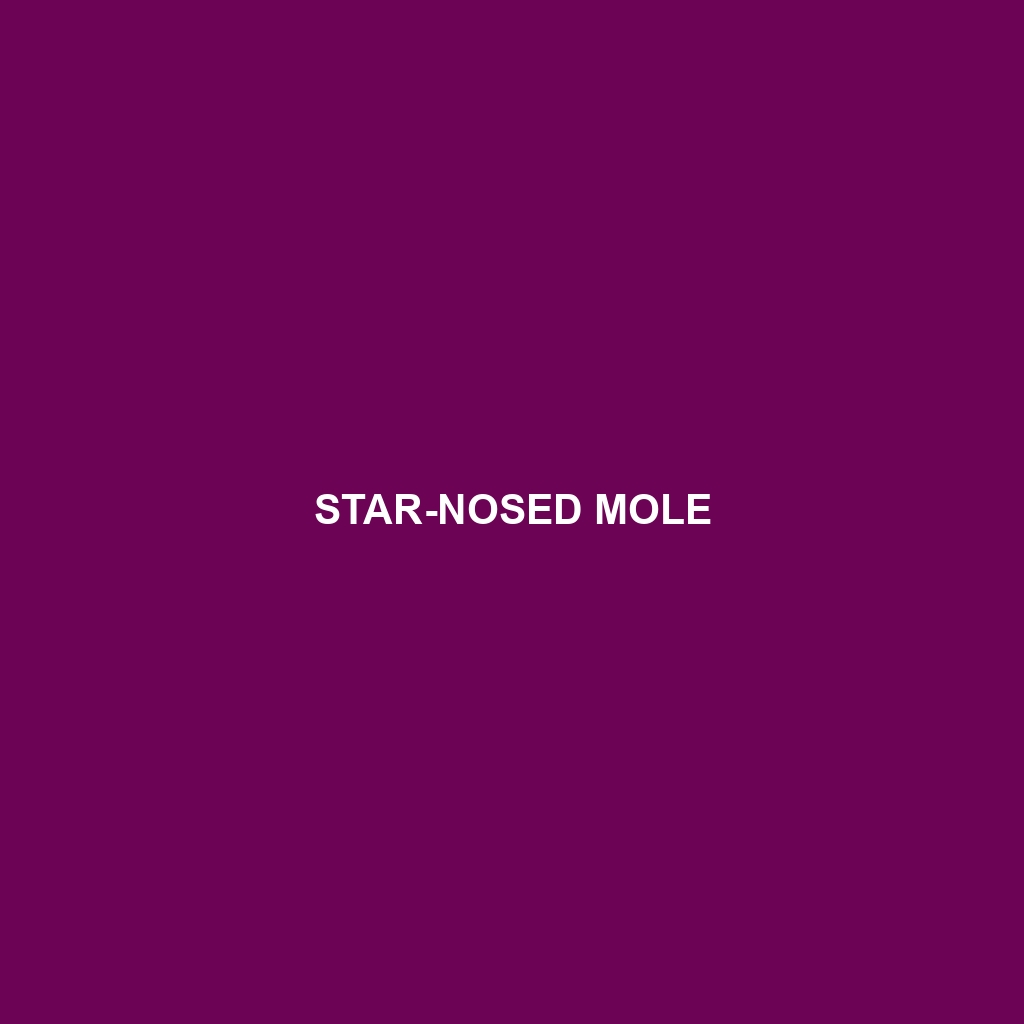Star-nosed Mole: An In-Depth Species Description
Common Name: Star-nosed Mole
Scientific Name: Condylura cristata
Habitat
The Star-nosed Mole is primarily found in North America, particularly in the northeastern United States and parts of Canada. This species thrives in wetland environments, including marshes, bogs, and edges of streams and rivers. Its preference for soft, moist soils allows it to dig extensive burrow systems both above and below ground, which are often associated with areas rich in aquatic vegetation.
Physical Characteristics
The Star-nosed Mole is a small, stocky mammal, typically measuring between 7 to 9 inches in length, with a tail that adds about 3 to 4 inches more. This unique mole is easily recognizable due to its star-shaped nose, which is adorned with 22 fleshy, pink tentacles that give it a distinctive appearance and enhance its ability to sense its environment. The fur is short and velvety, generally dark brown to black in color, aiding in camouflage within its natural habitat. The broad, flat paws are ideal for swimming, a behavior this mole often exhibits.
Behavior
Star-nosed Moles are primarily nocturnal, displaying unique behavior patterns that include swimming in water and digging intricate tunnels. They have an incredible tactile sensitivity thanks to their star-shaped snout, allowing them to forage effectively in the dark. This species is known for its rapid feeding behavior; it can consume food almost instantly by using its highly specialized nose and can eat up to 50 insects and invertebrates each day.
Diet
Star-nosed Moles are carnivorous, primarily feeding on a diet consisting of insects, earthworms, and other invertebrates found in soft, moist soil. They are adept hunters and use their star-nosed appendages to quickly identify and capture prey, which contributes to their high metabolic rate. Their diet is crucial for maintaining the health of soil ecosystems by aerating the soil and controlling insect populations.
Reproduction
The breeding season for the Star-nosed Mole typically occurs in late winter to early spring, with females typically giving birth to a litter of 2 to 7 offspring after a gestation period of about 30 days. The young are born blind and helpless, relying on their mother’s care for the initial weeks of life. Interestingly, the mother mole constructs elaborate nests within their burrows to provide warmth and protection for her young until they are ready to venture out.
Conservation Status
The current conservation status of the Star-nosed Mole is classified as “Least Concern” according to the IUCN Red List. However, habitat destruction and water pollution pose potential threats to their populations in certain areas. Continued monitoring is essential to ensure their populations remain stable, especially in sensitive wetland habitats.
Interesting Facts
One fascinating fact about the Star-nosed Mole is that it possesses the fastest feeding response of any mammal, being able to identify and consume food in less than a quarter of a second! Additionally, it is the only mole species with a unique star-shaped sensory organ that enhances its ability to detect prey in aquatic environments.
Role in Ecosystem
The Star-nosed Mole plays a significant role in its ecosystem by aerating the soil through its burrowing activities, which promotes plant growth. Furthermore, by controlling insect populations, these moles contribute to the overall health of their wetland habitats. As prey to larger predators, they also serve as an important food source within the food web.
